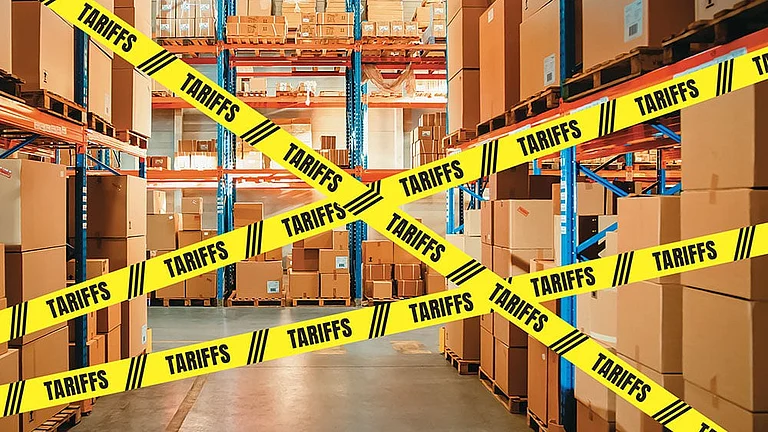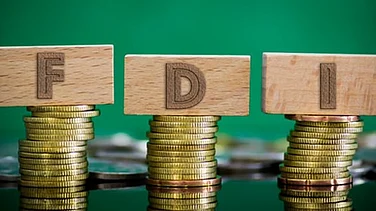As the great elections season looms large, with five states poised for polls, followed by the high-stakes general elections, the Modi government finds itself at a pivotal crossroads. The opposition, a formidable coalition of 26 parties, has unleashed a relentless barrage of attacks on the Centre, fervently claiming that the nation's economy lies in ruins after nine years under Modi's rule.
In a spirited defense, the Modi government frequently brandishes India's resolute GDP growth figures, proudly touting accolades from global institutions that cast it as a 'beacon of hope' in a world beleaguered by economic turmoil.
Post-pandemic India’s GDP growth has surged by a remarkable 9.1 and 7.2 per cent in the past two financial years, overtaking its archrival, China, and other emerging markets. Yet, lurking on the horizon are the ominous shadows of global economic challenges, inching ever closer to the Indian economy.
Recent trade data and the quarterly results of FMCG firms ominously hint at a gathering storm on the demand side of the economy. As the quality of jobs deteriorates, reflected in decrease in share of regular wage workers in NSO data, imports of non-oil, non-gold (NONG) goods dwindle, and non-finance company sales remain lackluster, grave concerns mount regarding the state of consumer demand in the nation. The thunderous question reverberates: What fate awaits the heart of India's economic engine?
Downturn In Imports
In the latest trade data figures, India's trade deficit experienced a remarkable shift, narrowing to a modest $19.4 billion for the month of September. What truly raised eyebrows, though, was the sharp 15 per cent plunge in imports, sounding alarm bells for demand destruction within the Indian economic landscape.
For the first half of fiscal year 2023-24, the import contraction paints a stark picture with a notable 12.2 percent decline, while exports follow suit with an 8.8 percent downturn during the same period.

But the real crux lies in the imports breakdown, where two conspicuous categories, namely oil and NONG (non-oil, non-gold) goods, show an unyielding trajectory of decline, persistently marking the downward spiral month after month throughout the initial half of this fiscal year.
In a research note published by Anand Rathi Institutional Equities, the data for September showed that the largest fall in the imports amongst the NONG category was recorded in textile (-55 per cent), transport equipment (-53.1 per cent), ores and minerals (-28.6 per cent) and chemicals (-24.2 per cent).

Explaining the trend, analysts at the firm noted, “A fall in imports of ores and minerals, chemical products, transport equipment and agricultural products indicates a fall in overall domestic demand.” G Chokkalingam, founder of Equinomics Research, says that weak demand has been a concern which is reflected in the data.
The decline in imports comes amidst the weak execution of projects by private players. In terms of announcements of projects, the private sector has been leading the government by a large margin. However, when it comes to execution, the private sector is behind the government, raising worry about their capex.

Lack of demand has been cited as one of the reasons why the private capex has remained elusive for some time. Motilal Oswal research showed that in the first six months of 2023, corporate investments growth declined in both the quarters.
A Sales Problem
The impact of weakened demand is evident in the performance of Fast-Moving Consumer Goods (FMCG) firms. In the first two quarters of FY24, data from the market intelligence firm Bizom showed a decline in sales. In Q1, sales declined by 4.6 percent, followed by a 2.3 percent decline in Q2.
Addressing the performance, Marico stated that the demand situation remained consistent between the two quarters. "Instances of rising food prices and below-normal rainfall distribution in some regions seemed to impede the anticipated recovery in rural demand," the company said, adding, "In this given context, domestic volumes grew in low-single digits on a year-on-year basis.”
Godrej Consumer Products Ltd shared a similar sentiment in its update, citing adverse macroeconomic conditions and unfavorable weather patterns during the quarter.
“In India, we witnessed weak macros and adverse weather conditions during the quarter,” the company said. While some FMCG firms performed well in the first quarter, indicating potential for rural demand recovery, the erratic southwest monsoon disrupted this progress, with two out of four months experiencing deficient rainfall. The long-term average also fell below normal at 94.4 percent.
Sarbartho Mukherjee, Senior Economist at CareEdge Ratings, says, “Downside risk to external as well as domestic demand continues to remain high with slower global growth and an uneven monsoon. Weaker demand is also corroborated by the muted volume growth of domestic FMCG companies.”
Muted growth extends beyond FMCG companies. An analysis conducted by the Center for Monitoring Indian Economy (CMIE) across more than 3,000 non-finance listed companies revealed a significant decline in real sales growth. Real sales growth during Q1FY24 stood at a mere 3 percent, which is a substantial departure from the historical average of 7.5 percent maintained since 2007.
Analysts believe that the festive season serves as a beacon of hope for India Inc. Anand Rathi analysts have noted that the onset of the festival season may lead to an increase in the imports of non-oil goods. However, the eruption of war in the Middle East is likely to alter the demand dynamics in the country. This is because it could push inflation higher due to rising crude oil and other commodity prices.
Since Hamas' terror attack and Israel's subsequent declaration of war in retaliation, crude oil prices have seen a 10 per cent surge in the international market. High inflation has already impacted consumer sentiment in the previous quarter, affecting demand in the country. When looking at the three-month average between July and September, there was only one percent growth compared to the typical growth rate of two percent. Notably, sentiment in September experienced a 4 per cent increase, but it was still insufficient to significantly boost the overall average.

If inflation escalates in the coming months, it could certainly dampen the prospects for Indian consumers and the economy. This situation might give the opposition an opportunity to raise concerns about decelerating economic growth in state elections, a narrative they have previously struggled to prove with numbers.































